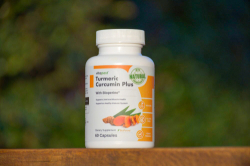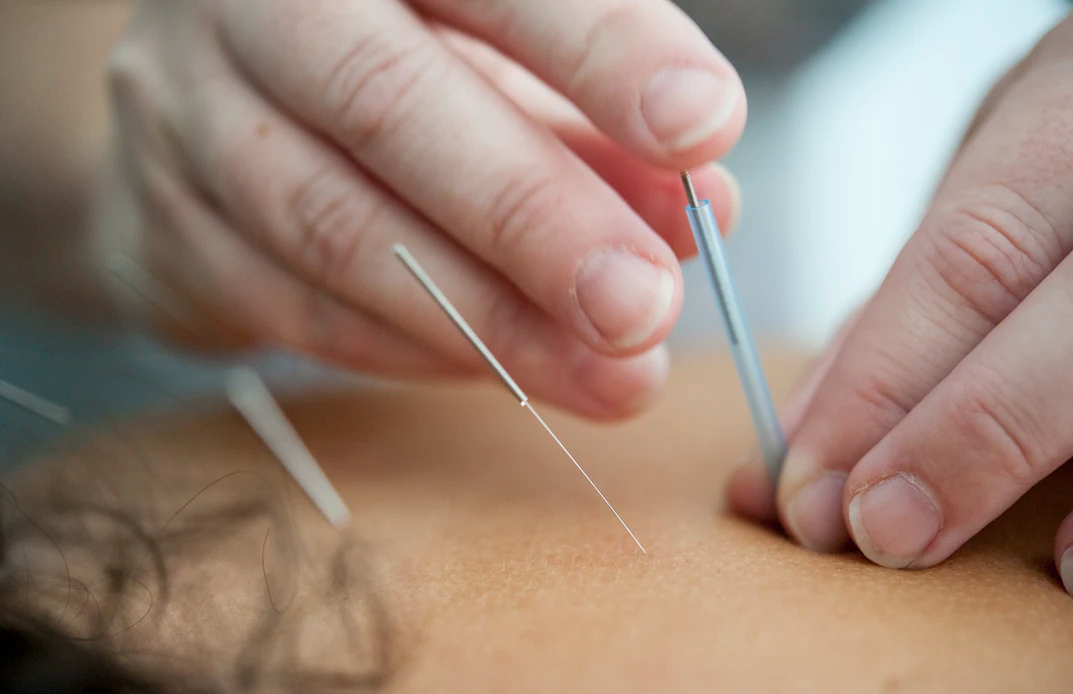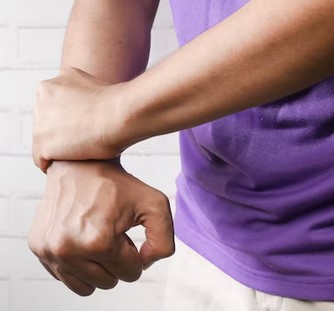Treating Chronic Pain with Acupuncture
Contents
Chronic pain just sucks.
Chronic pain refers to presence of pain and pain flare-ups that get in the way of movement, work and general life. We’ve treated a number of such chronic pain cases, and it’s not a walk in the park.
Some of our patients swear by acupuncture, which is a part of traditional Chinese healing for centuries and first drew widespread interest in the United States when relations between China and America improved. What’s good about acupuncture is that it’s medication-free (ie no medicine) and it’s done by inserting very fine, thin needles into targeted areas of the body to
- bring about pain relief
- localized healing
- etc
***
You can also consider taking Turmeric Curcumin Plus formula which provides a significant serving of curcumin, turmeric’s primary active ingredient. It can bring down pain and inflammation, both of which tends to be present in patients with chronic pain.
In various studies, curcumin has shown potential to support joint and muscle health, provide potent antioxidant support, and support a healthy immune system.
Turmeric Curcumin is formulated with three key ingredients:
- Turmeric – This spice is one of the most popular food supplements ever, with studies benefits for body & mind health and antioxidant properties
- Curcuminoids – These natural polyphenol compounds are derived from turmeric. Studies indicate curcuminoids provide support for the immune system, cognitive function, and joint health
- BioPerine – A patented extract of peppercorn, BioPerine is used to dramatically increase the absorption of curcumin
Turmeric Curcumin Plus is made in the US in an FDA registered facility that follows GMP guidelines. Ingredients in the formula are both domestic and imported.
Buy Tumeric Curcumin Plus here for Chronic Pain
***
Acupuncture is very suitable to treat painful conditions including chronic pain, according to TCM physicians, and it doesn’t contradict/conflict with any medications or post surgery management.
Some of our patients report that acupuncture give them pain relief that can last for days and even weeks (of course, this varies on a patient-by-patient basis).
Acupuncture has been shown to be as effective or more effective than other treatments for these painful conditions and symptoms:
- Migraine headaches
- Nausea
- Osteoarthritis, including knee arthritis
- Temporomandibular joint disorders (TMJ)
- Neck pain
- Sciatica
That being said, acupuncture does not always work to relieve pain – sometimes, helps with something else for different patients.
Differing Views on Acupuncture
Acupuncture has been a controversial topic in the medical community for years.
Studies typically show moderate improvements in symptoms following acupuncture, but many experts debate its effectiveness and whether it’s more than just a placebo effect (this is because western medicine has a lot of funding for research, but TCM in the past thousands of years history, tends to be a more teacher-student manner of teaching).
To add to that, significant pain relief from acupuncture is often reported anecdotally. In many cases, this comes after alternative treatments have failed in their duties to alleviate it.
How Acupuncture Works
Under the traditional Chinese concept of acupuncture, the body has energy, and disease or unhealth happens when
- energy cannot flow
- energy is blocked
- energy leaks
This life force, the TCM call as “qi” (pronounced as “chi”) and health is when our bodies is at a nice, balanced and harmonious system.
In traditional Chinese medicine, there are specific points in the body (these are known as “meridian centers” that need to be balanced and needles of a certain size can be used for this effect.
These needle’s diameters is 20 times less than what you would see as an injection but they have the same effect on your health.
So the background is that pain is a signal that your entire body needs to be balanced.
Acupuncturists take this holistic approach and focus on the totality of one’s health rather than just concentrating on their pain or illness because they understand how interconnected our bodies are.
Some acupuncture practitioners, especially those with medical experience may be more likely to view the needles in terms of physical stimulation. Modern medicine tends to focus on how these tiny punctures activate nerve and muscle cells that then reduce a patient’s sensation of pain or release their body’s natural endorphins so they can feel better.
Note: Before considering acupuncture, we always advise patients and individuals to check in with their medical practitioners and doctors to accurately identify root causes of pain. If there is an underlying condition that requires immediate attention from your doctor, then this can be addressed first before deciding on whether or not you want to try out acupuncture as well.
Acupuncture: What to Expect
Acupuncture practitioners who are experienced usually know their stuff.
Ie they will tend to be confident of their knowledge, experience and expertise.
They also tend to take a holistic approach, viewing your pain as an indicator that their body is out of balance. They may discuss life force and qi (pronounced “chee”), which they believe to be at the core of good health when it flows freely through one’s being.
Thorough Examination Expected
TCM sessions can be quite different from normal clinical sessions eg
- they may assess the color of your tongue or its coating
- they may assess your eye and nails
- they will hear your pulse and heart rate
- they may assess your skin health
- etc
There are many different examinations that they will do, and though acupuncture appointments may take significantly longer than a standard medical appointment, but it also has many benefits. These appointments often include other types of stimulation such as massage or heat therapy and can last up to an 45 minutes+ per session.
Acupuncture Needle Insertion
If you’re getting acupuncture, don’t forget to wear something loose-fitting so the TCM physician or acupuncturist can access body, hands and feet.
If not, you may have to change into something more comfortable before assessment then instructed to lie down on a padded bed (plinth) and then treated with 1-20+ different acupuncture needles on your body, depending on what you need.
Sometimes you wont even realise the needles have been inserted because they’re so fine, and deeper needles typically used to treat painful areas surrounded by deep muscle or fat, such as sciatica.
Some patients feel nothing at all, some patients feel some tingling sensation, some feels some pain.
That being said, acupuncture typically causes little to no pain, but if you’re not comfortable with that feeling you dont have to force yourself though.
The depth of the needle and duration of treatment varies from person to person depending on their medical problem and how they react when we insert the needles into them for about 5 minutes or up to 50 minutes.
Acupuncture needles come in different sizes and shapes, making it easier for the healer to choose which one is best. Sometimes the TCM physician may include also mild electrical pulses are sometimes used between two needls (called electro-acupuncture) to expand on area of pain relief.
Acupuncture: Is it safe?
The needles used in acupuncture are small and sharp, but they only penetrate the skin a few millimeters – that is why when administered by an experienced practitioner it’s generally considered safe.
Bleeding, bruising, and soreness, where the needle is inserted, may sometimes happen, but they typically are rare incidences with little to no serious cases.
Warning:(1) If you notice swelling, redness or other signs of infection at the site where needles were inserted then medical help should be sought. (2) Acupuncture may not be the best option for pregnant women and (3) those who are also taking blood thinner medications such as warfarin.
Again, please always check in with your physician and doctors before starting your acupuncture treatments, to ensure that nothing is amiss.
Who Offers Acupuncture?
Acupuncture is generally offered by two kinds of practitioners:
- TCM physicians
- Acupuncturists
Laws, licensing and insurance vary from country to country and state to state, so always ensure they have fully completed training and are fully licensed and insured first.
You can speak to your physician to ask them for a referral (they may know some trusted ones).
***
 You can also consider taking Turmeric Curcumin Plus formula which provides a significant serving of curcumin, turmeric’s primary active ingredient. It can bring down pain and inflammation, both of which tends to be present in patients with chronic pain.
You can also consider taking Turmeric Curcumin Plus formula which provides a significant serving of curcumin, turmeric’s primary active ingredient. It can bring down pain and inflammation, both of which tends to be present in patients with chronic pain.
In various studies, curcumin has shown potential to support joint and muscle health, provide potent antioxidant support, and support a healthy immune system.
Turmeric Curcumin is formulated with three key ingredients:
- Turmeric – This spice is one of the most popular food supplements ever, with studies benefits for body & mind health and antioxidant properties
- Curcuminoids – These natural polyphenol compounds are derived from turmeric. Studies indicate curcuminoids provide support for the immune system, cognitive function, and joint health
- BioPerine – A patented extract of peppercorn, BioPerine is used to dramatically increase the absorption of curcumin
Turmeric Curcumin Plus is made in the US in an FDA registered facility that follows GMP guidelines. Ingredients in the formula are both domestic and imported.
Buy Tumeric Curcumin Plus here for Chronic Pain
Where To Next?
- Go to Home / Start
- Learn and find out more about your pains (bones, muscles, joints, tendons, ligaments, nerves etc) at Pain Conditions & Injuries
- Visit our shop to see products we recommend for pain relief, heating, treatments and more
- Contact us





